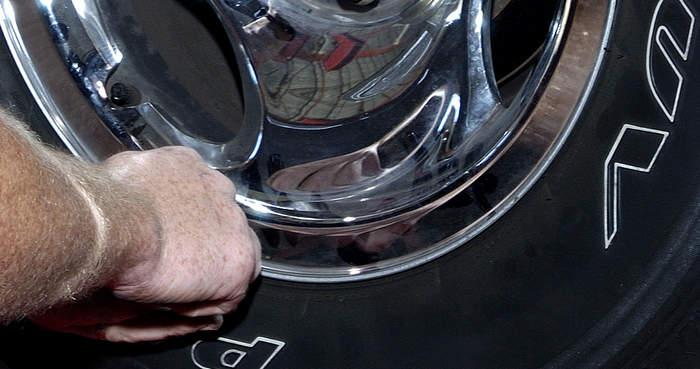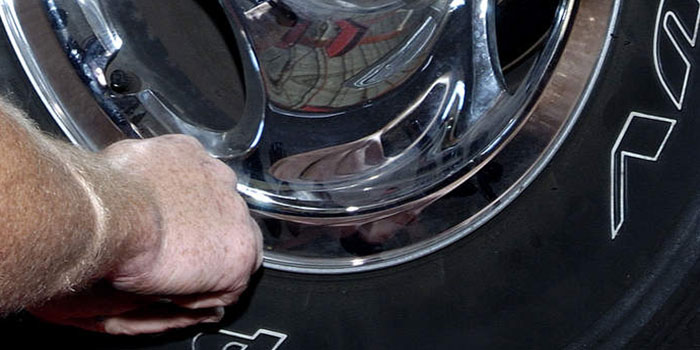
Off-car wheel balancers do an excellent job of measuring dynamic unbalance — static and couple — and many also measure tire/wheel uniformity, radial runout or calculate radial force variation (RFV) to help eliminate vibration and verify the assembly is balanced and round when rolling.
However, two problematic assumptions are made with off-car balancers:
1. That the technician has centered the wheel on the balancer. If the wheel is not centered, all of the measurements and attempts to repair the unbalance are compromised.
2. That the measured centerline of the wheel remains unchanged from the balancer when it is placed on the vehicle hub.
The purpose of this article is to address assumption No. 2, which is often overlooked. The assembly centerline does not remain unchanged from the balancer to the vehicle hub on the majority of vehicles.
On-car balancing solves many issues that off-car balancing cannot address because the wheel assembly is not perfectly centered on the vehicle due to small clearances that can make a big difference in radial force ride quality. Nominal clearances between the wheel hub bore and the vehicle hub are often at least +0.1 mm (+0.005”) in order for the wheel to slide onto the vehicle hub. When the wheel is installed, gravity imperceptibly pulls it downward to induce a radial runout change of at least +0.010”. The wheel is now off-center enough to add or subtract from the runout of the assembly and the residual static unbalance in the wheel depending on the angle of the remaining radial force vector. This claim is backed by numerous NVH tire service engineers, and Ford and Jaguar have TSBs that address on-car corrections of residual tire/wheel RFV by taking advantage of the wheel hub-bore-to-vehicle-hub clearance.
Virtually every vehicle that is measured for eccentricity, road force or static unbalance can benefit from using a hub-bore-to-vehicle-hub clearance indexing to assist in canceling the remaining RFV or static force in the assembly during installation.
 RFV Wheel Balancers
RFV Wheel Balancers
RFV wheel balancers should be used to index the wheel to the vehicle hub to greatly reduce on-car eccentricity and RFV. This will also, in most cases, save time by eliminating the time-consuming match mounting.
Simple Index Process:
1. With the wheel properly centered on the balancer, measure RFV and balance the tire assembly.
2. Before removing the assembly from the balancer, rotate the high point/stiff spot to 12 o’clock (TDC) using the prompts on the balancer screen.
3. With a tire crayon, mark the high point/stiff spot of the assembly on the inside rim edge and inner sidewall.
4. Place the assembly on the vehicle hub with the index mark at TDC.
5. Install and torque the lug nuts/lug bolts per factory specification.
Residual Static Unbalance
Wheel balancers with a residual static unbalance display should be used to index the wheel to the hub to cancel the residual static force — without the time-consuming addition of a third correction weight.
Simple Index Process:
1. With the wheel properly centered on the balancer, balance the tire assembly. Note if residual static unbalance is over .35 oz.
2. Before removing the assembly from the balancer, rotate the residual static unbalance location to TDC.
3. With a tire crayon, mark the residual static unbalance of the assembly on the inside rim edge and inner sidewall.
4. Place the assembly on the vehicle hub with the index mark at TDC.
5. Install and torque the lug nuts/lug bolts per factory specification.
When indexing the tire/wheel assembly on the balancer, be sure to mark the inside rim edge with the tire sidewall if the customer returns. Slippage between the rim and tire due to a hard stop or fit issues between the flange and lip can cause the problem to comeback.
Understanding that there is no longer a need (on a majority of vehicles) to match mount or add a third wheel weight will save you time. As an example, an assembly that measures 35 lbs. of road force (or ~0.30” R1H radial runout) when indexed at TDC will drop down, subtracting approximately +15 lbs of road force, and end up with approximately a 20 lb. assembly that is well within vehicle tolerances to ensure a smooth ride. Many hub bore clearances are higher than the nominal 0.1 mm (0.005”). If the assembly is not indexed and ends up at BDC, the clearances work against the technician when trying to repair the vibration and ensure the best ride quality.
Courtesy Brake & Front End.














